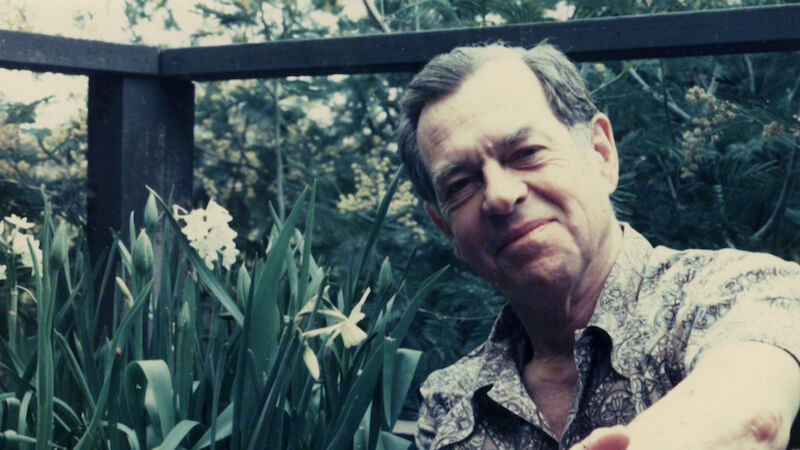
One of the bedrocks of my spiritual practice is a multi-dimensional connection with mythology. Myths, closely tied to religion and philosophy by definition, helped form me — my beliefs, fears, and dreams — yet these myths were from many different cultures, like me.
In the end, one word connects all of them: story. Myths, stories, parables, folk tales, or legends, visions of accounts, events, or the evolution of things make up who we all are. And so do the stories we hold from years of living.
“We swim in a sea of stories, embodied belief systems, encoded narratives of our own devising or learned from others,” said Bob Walter, President of the Joseph Campbell Foundation and Campbell’s editor for years. “Everyone’s life is guided, whether consciously or unconsciously, by these so-called myths.”
Campbell coined the term, the “monomyth.” Also called “the Hero’s Journey,” it examines the stages of one’s journey: adventure, facing crisis, winning, and returning victorious. To make the myths our own and learn how they’ve shaped us helps us live in our truth, and it’s a journey that lasts a lifetime… if you’re willing.
In advance of his upcoming workshop, Walter answered a few of my questions about myths, self-identity, and the importance of an adult’s willingness to “play” in these stories.
Christine Chen: What empowerment comes from identifying the “my” in myth?
Bob Walter: If one is unable to identify, embrace and/or modify the myths that are shaping and guiding our individual heroic adventure, then we are constantly striving to live into another’s truth, rather than our own. Campbell reminds us that in the Arthurian Romances it is written that “each knight enters the forest where it is darkest and there is no path.”
CC: Why is “Who Are You?” such a hard question?
BW: “Who are you?” is an extremely difficult question for many of us to answer, because our lives have been shaped from birth and are continuously being modified and moderated — not by our individual perceptions, lived experiences, and unique understandings — but rather, by the instructions of others, encoded, as it were, in the stories about who we are that have dogged us from birth.
CC: Are myths bad? Also good?
BW: Whoever said that they were bad? A myth can be either “good,” which is to say, a life-affirming and sustaining guide that helps you live a rich and fulfilling life. Or, a myth can be “bad,” that is, a debilitating narrative that circumscribes or otherwise inhibits your ability to realize your full potential and/or engage meaningfully with others.
CC: As an adult, do we return to play in these myths — and why?
BW: Myth emerges from the liminal zone between quotidian reality and the realm of the imagination. We mostly live routinely, enduring day-to-day tedium without complaint; but, few of us are fortunate enough to have retained the ability to inhabit the imaginative realms we “once-upon-a-time” experienced as children. For as Campbell reminds us, “When what you are doing stops being fun, it becomes ‘work, and is no longer ‘play.’” Rediscovering the ability to play is essential. It gives meaning to what we are doing and can be the gateway to reentering the revelatory kingdom of the imagination.
CC: How can play allow ourselves to see our true self and perhaps envision a new self?
BW: We were all arguably most innately ourselves when we were playful children, before the world in the person of well-meaning and/or unscrupulous others began to imprint us with their realities. In play, we can recover, re-vision, and transform those childhood retrievals, which is to say, we can reimagine the myths by which we live.
CC: When we get rid of the myth, what awaits?
BW: First, we can never get rid of the myths that have made us who we are. What we can do, however, is re-vision them and imagine new possibilities. And, I would suggest that doing so is, nowadays, essential. To quote Adrienne Rich: “Until we can understand the assumptions in which we are drenched, we cannot know ourselves ... We need to know the ... past differently than we have ever known it, not to pass on a tradition, but to break its hold over us.”
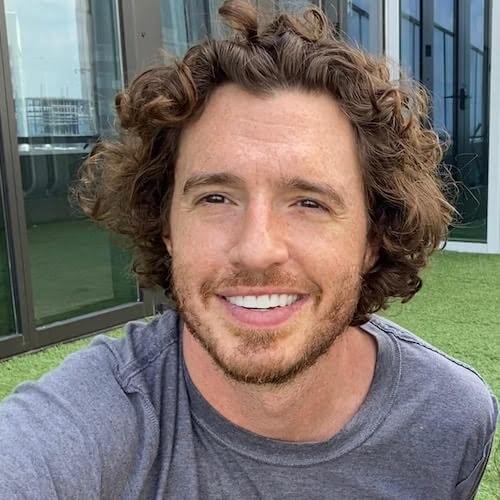
“Remembering to be as self compassionate as I can and praying to the divine that we're all a part of.”
–Aaron
“Prayer, reading, meditation, walking.”
–Karen
“Erratically — which is an ongoing stream of practice to find peace.”
–Charles
“Try on a daily basis to be kind to myself and to realize that making mistakes is a part of the human condition. Learning from our mistakes is a journey. But it starts with compassion and caring. First for oneself.”
–Steve
“Physically: aerobic exercise, volleyball, ice hockey, cycling, sailing. Emotionally: unfortunately I have to work to ‘not care’ about people or situations which may end painfully. Along the lines of ‘attachment is the source of suffering’, so best to avoid it or limit its scope. Sad though because it could also be the source of great joy. Is it worth the risk?“
–Rainer
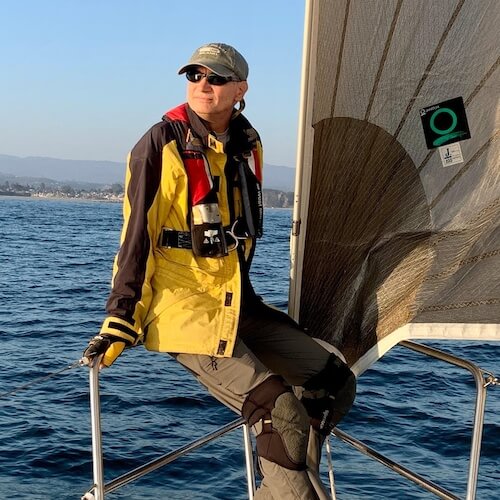

“It's time for my heart to be nurtured on one level yet contained on another. To go easy on me and to allow my feelings to be validated, not judged harshly. On the other hand, to let the heart rule with equanimity and not lead the mind and body around like a master.”
–Suzanne
“I spend time thinking of everything I am grateful for, and I try to develop my ability to express compassion for myself and others without reservation. I take time to do the things I need to do to keep myself healthy and happy. This includes taking experiential workshops, fostering relationships, and participating within groups which have a similar interest to become a more compassionate and fulfilled being.“
–Peter
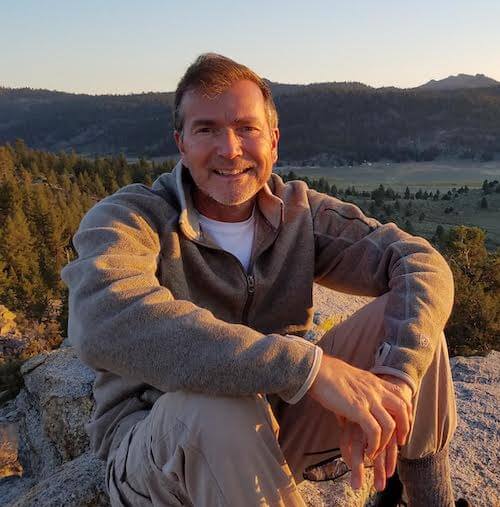
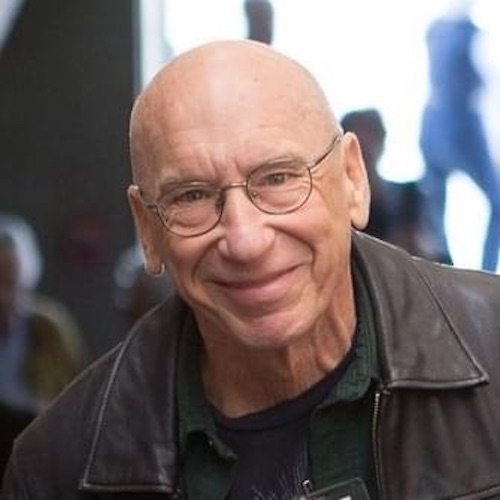
“Self-forgiveness for my own judgments. And oh yeah, coming to Esalen.”
–David B.
“Hmm, this is a tough one! I guess I take care of my heart through fostering relationships with people I feel connected to. Spending quality time with them (whether we're on the phone, through messages/letters, on Zoom, or in-person). Being there for them, listening to them, sharing what's going on with me, my struggles and my successes... like we do in the Esalen weekly Friends of Esalen Zoom sessions!”
–Lori

“I remind myself in many ways of the fact that " Love is all there is!" LOVE is the prize and this one precious life is the stage we get to learn our lessons. I get out into nature, hike, camp, river kayak, fly fish, garden, I create, I dance (not enough!), and I remain grateful for each day, each breath, each moment. Being in the moment, awake, and remembering the gift of life and my feeling of gratitude for all of creation.”
–Steven
“My physical heart by limiting stress and eating a heart-healthy diet. My emotional heart by staying in love with the world and by knowing that all disappointment and loss will pass.“
–David Z.
Today, September 29, is World Heart Day. Strike up a conversation with your own heart and as you feel comfortable, encourage others to do the same. As part of our own transformations and self-care, we sometimes ask for others to illuminate and enliven our hearts or speak our love language.
What if we could do this for ourselves too, even if just for today… or to start a heart practice, forever?
Bob Walter's upcoming workshop, Revisioning Your Hero’s Journey: A Mythological Toolbox, May 9-13, 2022 is full, but you can join the wait list to be notified of cancellations.
Christine Chen is a two-time Emmy winning journalist, best-selling author, California native, and senior teacher of yoga and Ayurveda.

One of the bedrocks of my spiritual practice is a multi-dimensional connection with mythology. Myths, closely tied to religion and philosophy by definition, helped form me — my beliefs, fears, and dreams — yet these myths were from many different cultures, like me.
In the end, one word connects all of them: story. Myths, stories, parables, folk tales, or legends, visions of accounts, events, or the evolution of things make up who we all are. And so do the stories we hold from years of living.
“We swim in a sea of stories, embodied belief systems, encoded narratives of our own devising or learned from others,” said Bob Walter, President of the Joseph Campbell Foundation and Campbell’s editor for years. “Everyone’s life is guided, whether consciously or unconsciously, by these so-called myths.”
Campbell coined the term, the “monomyth.” Also called “the Hero’s Journey,” it examines the stages of one’s journey: adventure, facing crisis, winning, and returning victorious. To make the myths our own and learn how they’ve shaped us helps us live in our truth, and it’s a journey that lasts a lifetime… if you’re willing.
In advance of his upcoming workshop, Walter answered a few of my questions about myths, self-identity, and the importance of an adult’s willingness to “play” in these stories.
Christine Chen: What empowerment comes from identifying the “my” in myth?
Bob Walter: If one is unable to identify, embrace and/or modify the myths that are shaping and guiding our individual heroic adventure, then we are constantly striving to live into another’s truth, rather than our own. Campbell reminds us that in the Arthurian Romances it is written that “each knight enters the forest where it is darkest and there is no path.”
CC: Why is “Who Are You?” such a hard question?
BW: “Who are you?” is an extremely difficult question for many of us to answer, because our lives have been shaped from birth and are continuously being modified and moderated — not by our individual perceptions, lived experiences, and unique understandings — but rather, by the instructions of others, encoded, as it were, in the stories about who we are that have dogged us from birth.
CC: Are myths bad? Also good?
BW: Whoever said that they were bad? A myth can be either “good,” which is to say, a life-affirming and sustaining guide that helps you live a rich and fulfilling life. Or, a myth can be “bad,” that is, a debilitating narrative that circumscribes or otherwise inhibits your ability to realize your full potential and/or engage meaningfully with others.
CC: As an adult, do we return to play in these myths — and why?
BW: Myth emerges from the liminal zone between quotidian reality and the realm of the imagination. We mostly live routinely, enduring day-to-day tedium without complaint; but, few of us are fortunate enough to have retained the ability to inhabit the imaginative realms we “once-upon-a-time” experienced as children. For as Campbell reminds us, “When what you are doing stops being fun, it becomes ‘work, and is no longer ‘play.’” Rediscovering the ability to play is essential. It gives meaning to what we are doing and can be the gateway to reentering the revelatory kingdom of the imagination.
CC: How can play allow ourselves to see our true self and perhaps envision a new self?
BW: We were all arguably most innately ourselves when we were playful children, before the world in the person of well-meaning and/or unscrupulous others began to imprint us with their realities. In play, we can recover, re-vision, and transform those childhood retrievals, which is to say, we can reimagine the myths by which we live.
CC: When we get rid of the myth, what awaits?
BW: First, we can never get rid of the myths that have made us who we are. What we can do, however, is re-vision them and imagine new possibilities. And, I would suggest that doing so is, nowadays, essential. To quote Adrienne Rich: “Until we can understand the assumptions in which we are drenched, we cannot know ourselves ... We need to know the ... past differently than we have ever known it, not to pass on a tradition, but to break its hold over us.”

“Remembering to be as self compassionate as I can and praying to the divine that we're all a part of.”
–Aaron
“Prayer, reading, meditation, walking.”
–Karen
“Erratically — which is an ongoing stream of practice to find peace.”
–Charles
“Try on a daily basis to be kind to myself and to realize that making mistakes is a part of the human condition. Learning from our mistakes is a journey. But it starts with compassion and caring. First for oneself.”
–Steve
“Physically: aerobic exercise, volleyball, ice hockey, cycling, sailing. Emotionally: unfortunately I have to work to ‘not care’ about people or situations which may end painfully. Along the lines of ‘attachment is the source of suffering’, so best to avoid it or limit its scope. Sad though because it could also be the source of great joy. Is it worth the risk?“
–Rainer


“It's time for my heart to be nurtured on one level yet contained on another. To go easy on me and to allow my feelings to be validated, not judged harshly. On the other hand, to let the heart rule with equanimity and not lead the mind and body around like a master.”
–Suzanne
“I spend time thinking of everything I am grateful for, and I try to develop my ability to express compassion for myself and others without reservation. I take time to do the things I need to do to keep myself healthy and happy. This includes taking experiential workshops, fostering relationships, and participating within groups which have a similar interest to become a more compassionate and fulfilled being.“
–Peter


“Self-forgiveness for my own judgments. And oh yeah, coming to Esalen.”
–David B.
“Hmm, this is a tough one! I guess I take care of my heart through fostering relationships with people I feel connected to. Spending quality time with them (whether we're on the phone, through messages/letters, on Zoom, or in-person). Being there for them, listening to them, sharing what's going on with me, my struggles and my successes... like we do in the Esalen weekly Friends of Esalen Zoom sessions!”
–Lori

“I remind myself in many ways of the fact that " Love is all there is!" LOVE is the prize and this one precious life is the stage we get to learn our lessons. I get out into nature, hike, camp, river kayak, fly fish, garden, I create, I dance (not enough!), and I remain grateful for each day, each breath, each moment. Being in the moment, awake, and remembering the gift of life and my feeling of gratitude for all of creation.”
–Steven
“My physical heart by limiting stress and eating a heart-healthy diet. My emotional heart by staying in love with the world and by knowing that all disappointment and loss will pass.“
–David Z.
Today, September 29, is World Heart Day. Strike up a conversation with your own heart and as you feel comfortable, encourage others to do the same. As part of our own transformations and self-care, we sometimes ask for others to illuminate and enliven our hearts or speak our love language.
What if we could do this for ourselves too, even if just for today… or to start a heart practice, forever?
Bob Walter's upcoming workshop, Revisioning Your Hero’s Journey: A Mythological Toolbox, May 9-13, 2022 is full, but you can join the wait list to be notified of cancellations.

One of the bedrocks of my spiritual practice is a multi-dimensional connection with mythology. Myths, closely tied to religion and philosophy by definition, helped form me — my beliefs, fears, and dreams — yet these myths were from many different cultures, like me.
In the end, one word connects all of them: story. Myths, stories, parables, folk tales, or legends, visions of accounts, events, or the evolution of things make up who we all are. And so do the stories we hold from years of living.
“We swim in a sea of stories, embodied belief systems, encoded narratives of our own devising or learned from others,” said Bob Walter, President of the Joseph Campbell Foundation and Campbell’s editor for years. “Everyone’s life is guided, whether consciously or unconsciously, by these so-called myths.”
Campbell coined the term, the “monomyth.” Also called “the Hero’s Journey,” it examines the stages of one’s journey: adventure, facing crisis, winning, and returning victorious. To make the myths our own and learn how they’ve shaped us helps us live in our truth, and it’s a journey that lasts a lifetime… if you’re willing.
In advance of his upcoming workshop, Walter answered a few of my questions about myths, self-identity, and the importance of an adult’s willingness to “play” in these stories.
Christine Chen: What empowerment comes from identifying the “my” in myth?
Bob Walter: If one is unable to identify, embrace and/or modify the myths that are shaping and guiding our individual heroic adventure, then we are constantly striving to live into another’s truth, rather than our own. Campbell reminds us that in the Arthurian Romances it is written that “each knight enters the forest where it is darkest and there is no path.”
CC: Why is “Who Are You?” such a hard question?
BW: “Who are you?” is an extremely difficult question for many of us to answer, because our lives have been shaped from birth and are continuously being modified and moderated — not by our individual perceptions, lived experiences, and unique understandings — but rather, by the instructions of others, encoded, as it were, in the stories about who we are that have dogged us from birth.
CC: Are myths bad? Also good?
BW: Whoever said that they were bad? A myth can be either “good,” which is to say, a life-affirming and sustaining guide that helps you live a rich and fulfilling life. Or, a myth can be “bad,” that is, a debilitating narrative that circumscribes or otherwise inhibits your ability to realize your full potential and/or engage meaningfully with others.
CC: As an adult, do we return to play in these myths — and why?
BW: Myth emerges from the liminal zone between quotidian reality and the realm of the imagination. We mostly live routinely, enduring day-to-day tedium without complaint; but, few of us are fortunate enough to have retained the ability to inhabit the imaginative realms we “once-upon-a-time” experienced as children. For as Campbell reminds us, “When what you are doing stops being fun, it becomes ‘work, and is no longer ‘play.’” Rediscovering the ability to play is essential. It gives meaning to what we are doing and can be the gateway to reentering the revelatory kingdom of the imagination.
CC: How can play allow ourselves to see our true self and perhaps envision a new self?
BW: We were all arguably most innately ourselves when we were playful children, before the world in the person of well-meaning and/or unscrupulous others began to imprint us with their realities. In play, we can recover, re-vision, and transform those childhood retrievals, which is to say, we can reimagine the myths by which we live.
CC: When we get rid of the myth, what awaits?
BW: First, we can never get rid of the myths that have made us who we are. What we can do, however, is re-vision them and imagine new possibilities. And, I would suggest that doing so is, nowadays, essential. To quote Adrienne Rich: “Until we can understand the assumptions in which we are drenched, we cannot know ourselves ... We need to know the ... past differently than we have ever known it, not to pass on a tradition, but to break its hold over us.”

“Remembering to be as self compassionate as I can and praying to the divine that we're all a part of.”
–Aaron
“Prayer, reading, meditation, walking.”
–Karen
“Erratically — which is an ongoing stream of practice to find peace.”
–Charles
“Try on a daily basis to be kind to myself and to realize that making mistakes is a part of the human condition. Learning from our mistakes is a journey. But it starts with compassion and caring. First for oneself.”
–Steve
“Physically: aerobic exercise, volleyball, ice hockey, cycling, sailing. Emotionally: unfortunately I have to work to ‘not care’ about people or situations which may end painfully. Along the lines of ‘attachment is the source of suffering’, so best to avoid it or limit its scope. Sad though because it could also be the source of great joy. Is it worth the risk?“
–Rainer


“It's time for my heart to be nurtured on one level yet contained on another. To go easy on me and to allow my feelings to be validated, not judged harshly. On the other hand, to let the heart rule with equanimity and not lead the mind and body around like a master.”
–Suzanne
“I spend time thinking of everything I am grateful for, and I try to develop my ability to express compassion for myself and others without reservation. I take time to do the things I need to do to keep myself healthy and happy. This includes taking experiential workshops, fostering relationships, and participating within groups which have a similar interest to become a more compassionate and fulfilled being.“
–Peter


“Self-forgiveness for my own judgments. And oh yeah, coming to Esalen.”
–David B.
“Hmm, this is a tough one! I guess I take care of my heart through fostering relationships with people I feel connected to. Spending quality time with them (whether we're on the phone, through messages/letters, on Zoom, or in-person). Being there for them, listening to them, sharing what's going on with me, my struggles and my successes... like we do in the Esalen weekly Friends of Esalen Zoom sessions!”
–Lori

“I remind myself in many ways of the fact that " Love is all there is!" LOVE is the prize and this one precious life is the stage we get to learn our lessons. I get out into nature, hike, camp, river kayak, fly fish, garden, I create, I dance (not enough!), and I remain grateful for each day, each breath, each moment. Being in the moment, awake, and remembering the gift of life and my feeling of gratitude for all of creation.”
–Steven
“My physical heart by limiting stress and eating a heart-healthy diet. My emotional heart by staying in love with the world and by knowing that all disappointment and loss will pass.“
–David Z.
Today, September 29, is World Heart Day. Strike up a conversation with your own heart and as you feel comfortable, encourage others to do the same. As part of our own transformations and self-care, we sometimes ask for others to illuminate and enliven our hearts or speak our love language.
What if we could do this for ourselves too, even if just for today… or to start a heart practice, forever?
Bob Walter's upcoming workshop, Revisioning Your Hero’s Journey: A Mythological Toolbox, May 9-13, 2022 is full, but you can join the wait list to be notified of cancellations.
Christine Chen is a two-time Emmy winning journalist, best-selling author, California native, and senior teacher of yoga and Ayurveda.